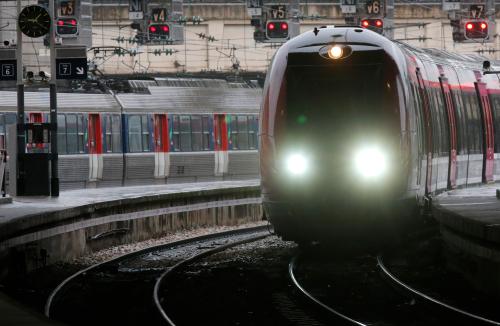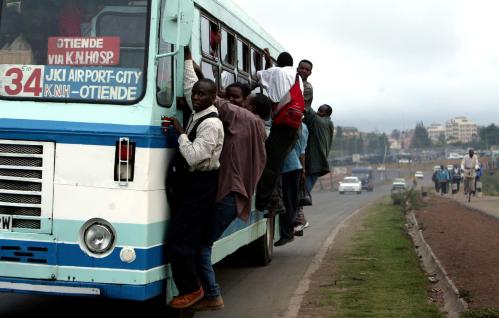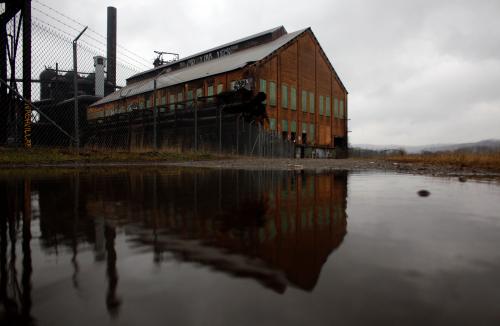Compared to 20 years ago, the recent worldwide attention toward improving infrastructure is music to the ears of a development practitioner like myself. However, my euphoria is tempered by a concern that treating infrastructure as one sector, largely from the financing perspective, underestimates the relative complexities and challenges of the various sectors and subsectors that comprise this broad term. For instance, the transport sector itself includes a multiplicity of subsectors, each with a set of idiosyncratic issues regarding demand and supply. Among the most challenging of infrastructure issues with substantial implications for sustainable and equitable growth is urban transport.
Ask any academic, practitioner, or other stakeholder about the importance of ensuring urban transport access and you will receive universal support. Ask each stakeholder to define what they mean by access, however, and the range of conflicting and confusing answers is akin to the “Tower of Babel” phenomenon, underscoring a deeper gap in defining, measuring, and ultimately creating policy to address transport needs across the global urban landscape. Without clarity about the meaning of “access,” urban transport policies and investments lack a rudder to steer the course.
During a Brookings event on current urban transport, a range of speakers confirmed this view, including Stephanie Pollack, secretary and CEO of the Massachusetts Department of Transportation, who emphasized:
“Even people who believe in accessibility assume that movement is actually the social utility provided by the transportation system. This is as false a belief that the kilowatt is the social utility of the energy system. How many people do you know who wake up every morning and say I would like to travel 83.2 miles today? You know none. How many people do you know that wake up and say I need to get the kids to school, I need to get to work, pick up groceries, and I’d love to go for a run after work. Everyone. The problem is we haven’t figured out how to talk about [accessibility] in a way that is as succinct, as compelling as heat, light, and power. ”
Addressing this issue requires a cross-sectoral approach. Toward this end, Brookings, under its Moving to Access project, commissioned three “think pieces” representing the crucial professional perspectives for addressing urban accessibility. The idea here is to understand that each perspective plays a key role in providing accessibility, be it in the evaluation and investment decisions of rapid transit projects through the transport perspective, effective and inclusive land-use policy through the urban planning perspective, or even affordability and pricing criteria through the fiscal/finance perspective. All together, the think pieces helped our team understand not only the overlapping strengths each sector has toward achieving accessibility, but also confirm a serious disconnect and the need to develop a common narrative across the professions.
One of the critical sources of confusion is within the transport sector itself and the multiple ways in which it uses the term access. Christo Venter, associate professor of engineering transportation engineering at University of Pretoria, distinguishes between three uses of the term access by transport professionals.
The first definition of access refers to the “quality of mobility.” That reflects the quality of the transport network in terms of the level of congestion, average speeds, and other measures related to the flow of traffic. It is the measure typically used in the economic and technical appraisal of transport investments.
The second type is “access to transport.” This reflects the physical accessibility of the transport network such as the average distance between a household and a road or a transit station. A typical measure is the percentage of households within 15 walking minutes of a bus stop or transit station. This can also refer to whether transit facilities and equipment are physically accessible by the handicapped and whether appropriate design measures are instituted.
If one looks deeply into these first two measures, it becomes apparent that neither addresses whether a household ultimately is well connected to employment or other critical activities.
This leads to the third use of the term Venter refers to as “access to opportunities.” It is directed at measuring how well connected are individuals to employment, services, or commerce. In its simplest form, it can be represented by the number of jobs or schools or clinics are within a given radius of a specific household. It subsumes the other measures but goes further. What is distinctive about this broader concept of urban accessibility is that it encompasses both changes in mobility as well as changes to land use. It recognizes that the concept of the quality of mobility, whether measured in terms of congestion or travel speeds, is not sufficient to determine if a household is well connected to sources of employment, relevant commerce, or needed services. It also recognizes that, besides building more infrastructure, access can be improved by facilitating the location of a school or clinic closer to a neighborhood, or housing closer to employment.
While the concept is not novel, the application in practice has proven more elusive. Among the key concerns is that a focus on mobility does not consider accessibility for low-income urban households. Studies of the widely heralded development of bus rapid transit in Latin America illustrate how in many cities such investments and service improvements have not served the poor due either to affordability or the peripheral locations of low-income neighborhoods, despite the high returns in terms of time savings and other measures of mobility. Growing concerns about “gentrification” and the impacts of transit improvements on land use require a more multi-disciplinary approach.
Without a widely recognized and easily interpreted measure, however, “access to opportunities” is not monitored and a range of alternative transport and land use policy options are often ignored. Until there is a mutual understanding that resonates across the disciplines and helps to formulate a broad political constituency, it is important to develop practical ways in which an access lens can be applied to transport and land use decisions as well as to distinguish between those financing instruments that contribute to better access.
While this may seem overly ambitious, recent efforts in developed and developing countries reveal progress in being able to measure access to opportunities, facilitated by information technology and data management. Multilateral Development Banks are already applying new tools and methods to measure accessibility and the impact of transport investments across various cities around the world from Kigali to Bogota. There is still, however, a long way to go in the broader incorporation of such analyses and in developing the empirical evidence on the impact of alternative land use and transport policies. As the Sustainable Development Goals take effect, getting accessibility for all takes on more urgency. While we may not have found the right words yet, as Stephanie Pollack posited, we should not be limited to “mobility for all” measures simply because they are easily collected. This will result in repeating the mistakes of previous decades.
The Brookings Institution is committed to quality, independence, and impact.
We are supported by a diverse array of funders. In line with our values and policies, each Brookings publication represents the sole views of its author(s).









Commentary
Making urban access a priority
February 9, 2017